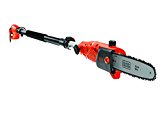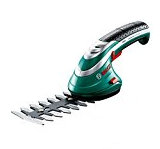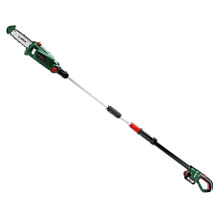Extendable hedge trimmer purchasing advice: how to choose the right product
- The most important facts in brief
- With telescopic hedge trimmers you can trim or cut branches that are several metres high.
- Different drives with battery, power cable or petrol offer the right model for all requirements.
- The models differ in the length of the cutting blade and the telescopic pole as well as the cutting strength and weight.
- Important safety features are two separate drive buttons and a blade stop function.
- To ensure the longevity of the blades, you should clean and sharpen them regularly.
Hedge trimming off the shelf
Certain tools and aids are indispensable for proper garden maintenance. Besides a lawn mower, a hedge trimmer is one of the most important tools for trimming or shaping not only hedges but also bushes and smaller trees. If the plants exceed a certain height that the amateur gardener cannot easily reach, the telescopic hedge trimmer comes into play. With the help of a longer and extendable pole, these can also work at greater heights without having to use a ladder. With a motorised drive, you can work quickly and effectively.
Unlike a manual hedge trimmer, which at least looks like a large version of a conventional pair of household shears, the motorised version does not have much in common with them visually at first glance. The cutting blade consists of two superimposed blades with sharpened teeth; in operation, only one moves back and forth or both move in opposite directions. This means that the sharp teeth cut from both sides.
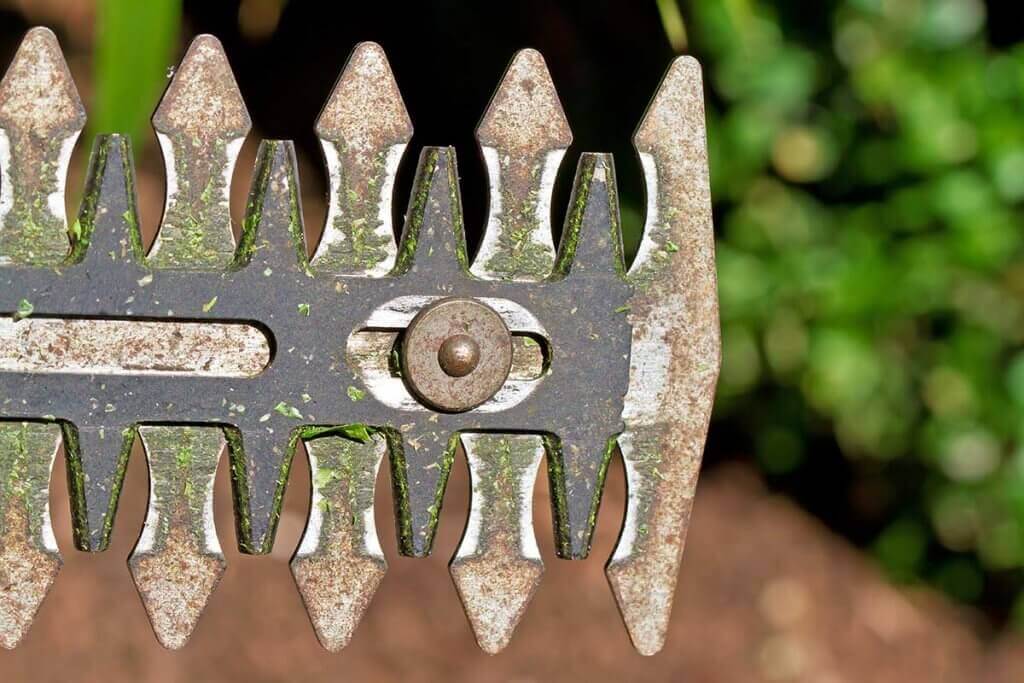
Cable

Hedge trimmers with a power cable have the advantage that you can work with them without time restrictions as long as they are connected to the power source. There are no delays due to preparations such as charging the battery or refilling the fuel. As a rule, these models are the lightest and cheapest. A disadvantage is the limited radius in which you work. If the cable of the device is not sufficient, you have to resort to an extension cable. This can become a nuisance and even a tripping hazard.
Battery

Variants with rechargeable batteries have a greater range because they work wirelessly. The increased freedom of movement is therefore much more comfortable here. In addition, these models are quieter than the others. A major disadvantage is the limited operating time. Many batteries only last half an hour or three quarters of an hour; to trim large areas, you would have to recharge them in between. In addition, cordless hedge trimmers are heavier and often more expensive than corded models.
Petrol

Telescopic hedge trimmers with petrol engines not only work unhindered, they are also the most powerful. They allow you to make the fastest progress and can even trim stubborn undergrowth reliably. They are usually more expensive, but this is compensated for by their long service life. As the engine is very loud, you should consider hearing protection and be aware of the possible nuisance to the surroundings. In addition to a large amount of maintenance, the higher follow-up costs due to the purchase of fuel must also be taken into account.
What features should be noted?
An important detail that all telescopic hedge trimmers have is the joint between the bar and the cutting blade. This allows the angle between these two parts to be adjusted. This allows users to cut horizontally or evenly from any position, be it at the foot of a hedge or at a height of several metres. However, the models differ in various features.
Cutting length
The length at which the blades of the pruning shear move back and forth is called the cutting length. A value of 40 to 50 centimetres is usual, on which a hedge cut is carried out at the same time. If your hedge is wider, you may need to work from both sides or go for a longer blade from the outset.
Cutting thickness
The cutting thickness is the distance between the two blades. It is usually one to two centimetres. Branches and twigs can be cut up to this diameter; thicker ones therefore do not get caught so easily in the cutting tools. With some models, a wider cutting thickness is also possible. If you need this frequently, you can also use a high pruner.
Weight
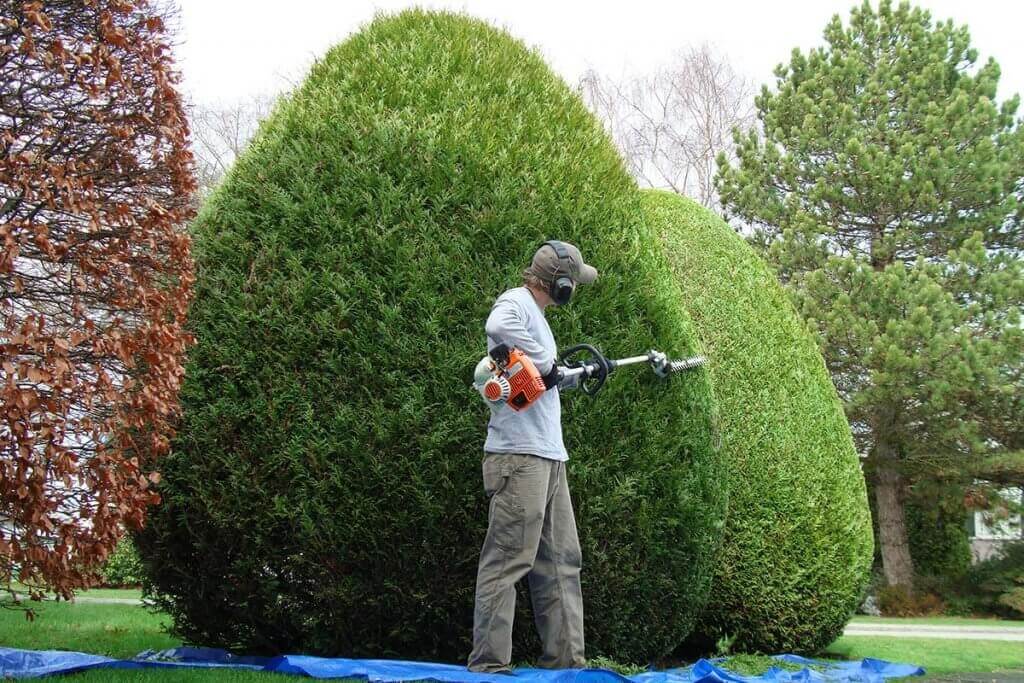
During longer work processes or whenever you hold the fully extended implement aloft for a longer period of time, the weight plays a role. In the long run, it makes a difference whether you lift three or seven kilograms. The models of telescopic hedge trimmers differ considerably in this respect, so you should keep this point in mind when buying. If necessary, take rest breaks during work so that you do not become unfocused during greater exertion.
Safety measures and devices
Many models of hedge trimmers are equipped with two buttons that must be pressed at the same time to switch the unit on. This prevents it from accidentally starting up if you reach a switch. Also, guiding with one hand, which would result in less stability anyway, is not possible.
Also common is a blade stop function; the motor switches off instantly when the drive switches are no longer pressed, and the blades do not run down. A synchronous stop mechanism ensures that the blades are congruent again after switching off. This reduces the risk of injury if you accidentally reach into the blade.
Some blades can be folded 180 degrees after use. Often hedge trimmers also come with a cover that can be slipped over the cutting blade. This is gentle on it and protects it from external influences.
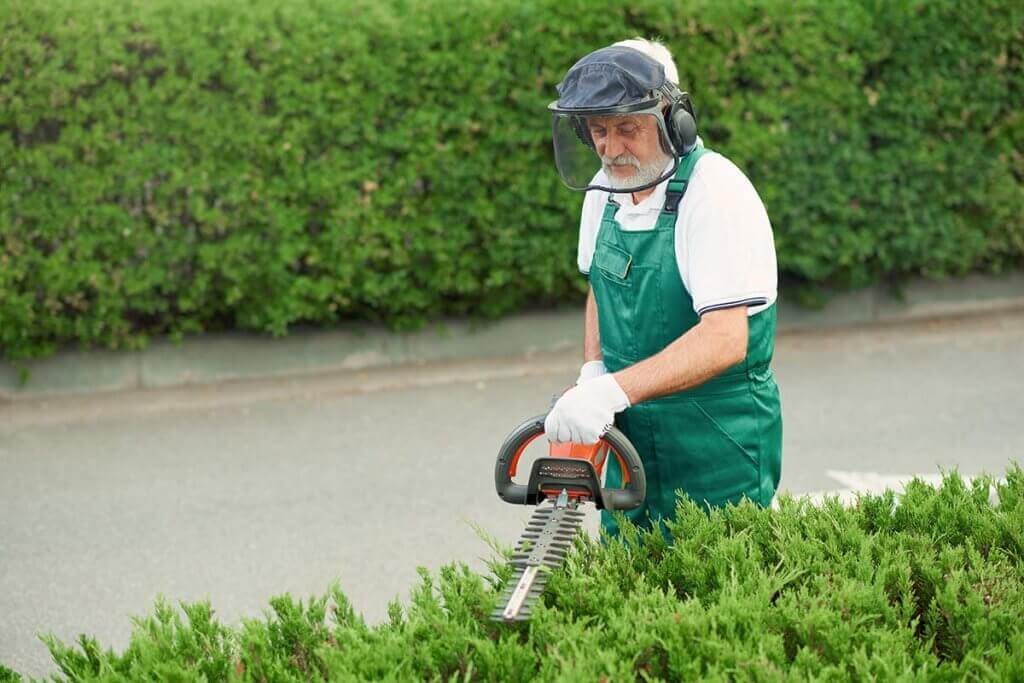
When working with a telescopic hedge trimmer, you should definitely wear a helmet to be protected from falling branches. Goggles or a visor to protect against flying undergrowth are also an advantage. Hearing protection is also recommended, at least for petrol-engined machines. These models in particular can reach a high volume, comparable to chainsaws or lawnmowers. In this context, make sure that you do not work outside rest periods.
Additional gadgets
Even if the telescopic hedge trimmer is heavy, it should be as comfortable as possible to guide. Some manufacturers make sure that the weight is well balanced. For example, there are models that have the motor built in behind the handles as a counterweight to the blade at the other end of the pole. Handles often have a pleasant ergonomic shape, including rubberised soft-grip surfaces. As a relief, a carrying strap can be attached to the tool with a hook, which makes longer work and carrying the tool more comfortable.
Some devices have a replaceable attachment, which allows the telescopic hedge trimmer to be converted into a high pruner. This is a chainsaw in a small format that can be used to cut high branches and twigs. Often the telescopic pole can be unscrewed so that the tool can be used like a conventional hedge trimmer.
Identical batteries in other tools
If you own several battery-powered tools from the same manufacturer, for example a drill or a chainsaw, their batteries are usually of the same type. You can exchange them with each other. In addition, you have a replacement if one charge is not enough for the work process.
Care of the tool
In order to work efficiently and to ensure a long service life of the blades, you should sharpen them from time to time. You can tell when it is necessary by the fact that the cutting performance is decreasing or the blades have become blunt. Grind the individual cutting teeth evenly and at the correct angle on both sides with a grindstone or a steel file. This video from the YouTube channel TechIllusion shows how you should proceed:
Use safety gloves when sharpening to avoid injuring yourself on the sharp blades. Also disconnect the hedge trimmer from the power supply or remove the battery as a precaution.
After use, remove coarse dirt from the blades and then oil them. Special oils with a resin-dissolving function are available in shops. Alternatively, you can use resin solvents such as acetone and conventional machine oil. Treat not only the blades, but also the shaft and screw connections. Regular oiling makes the blades run more smoothly and also protects against rust and resin deposits.
What do I have to keep in mind when cutting hedges?
It is best to cut your hedges back to the desired shape around mid-February. The shoots of most hedge plants tolerate pruning best at this early point in the year. Exceptions are, for example, forsythia, blood plum and jasmine, for which you should wait until after flowering before pruning. Also keep an eye on the temperature. If the thermometer shows less than minus five degrees Celsius, it is too cold for the cut branches to heal.
Around the middle to end of June, you can prune the hedge and trim the shoots again to about a third of their length. However, conifers are very sensitive: only the yew tree can tolerate pruning down to needleless shoots, all others will not sprout again from there. Therefore, be careful not to trim these plants further than the base of the needles.
No hedge trimming in summer
Many wood-cutting or hedge-cutting activities are prohibited under penalty of law during the spring and summer months. There is a closed season from 1 March to 30 September inclusive, which was introduced primarily to take account of the nesting season of birds. Only light corrective pruning or trimming of protruding shoots is permitted during this period.
Pay attention to the shape you give your hedge. If it is wider at the crown than at the bottom, it will deprive itself of sunlight. This can cause branches near the base to wither and, with some shrub varieties, even die. Ideally, the hedge should have a trapezoidal shape with a wider base. To ensure that the hedge is not cut crookedly at the top, you can draw a straight line in advance with the help of a line or string that you attach to two stakes.
Blades that are too blunt are not only ineffective, but can also damage the branches instead of cutting them cleanly. As a result, the plants recover more slowly and are more susceptible to mould.


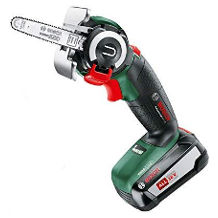
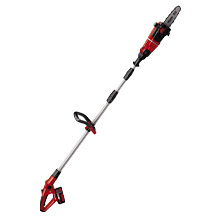



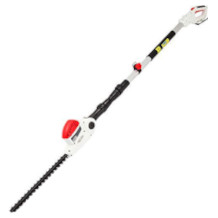
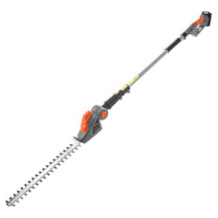

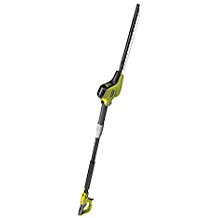
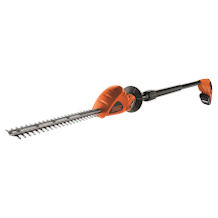
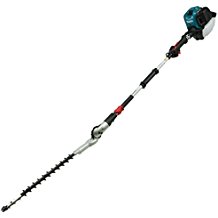
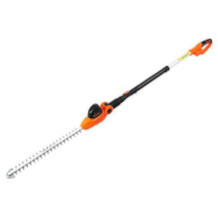
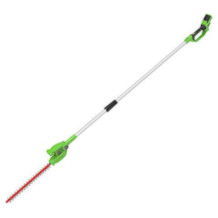
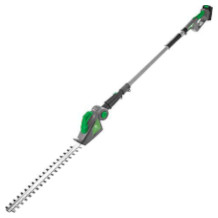
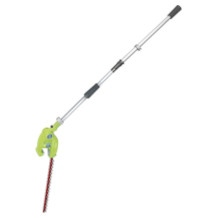

 2,650 reviews
2,650 reviews


